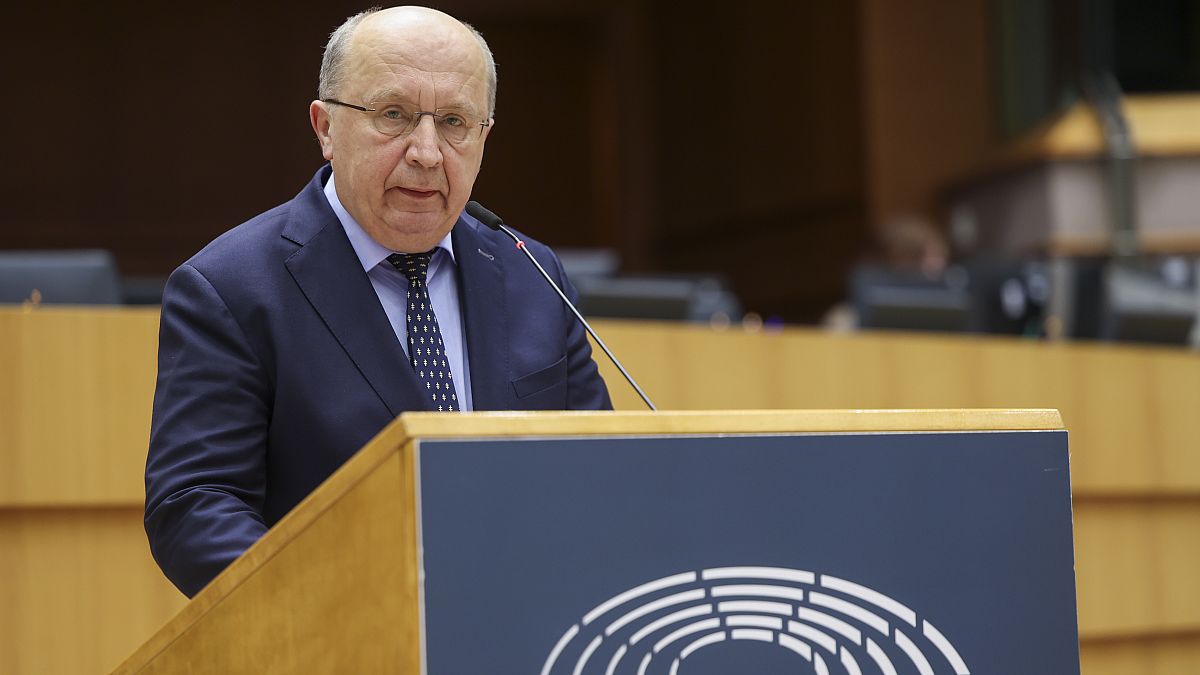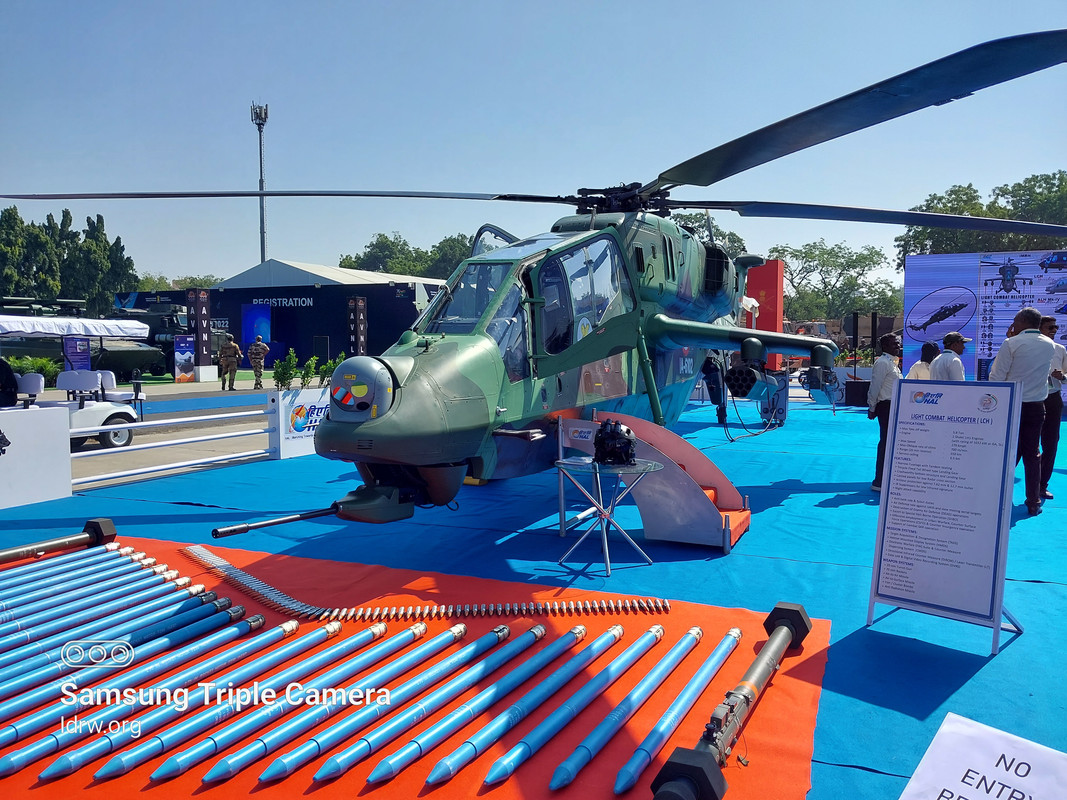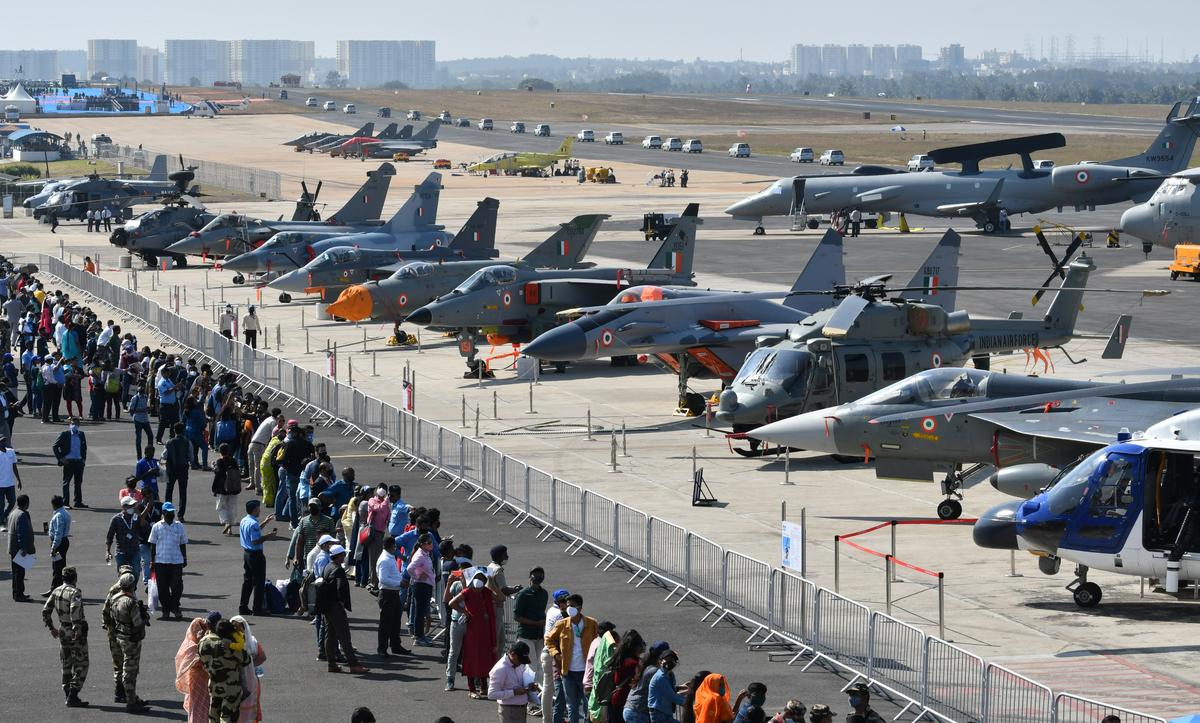SOURCE: AFI

At the India Today Conclave 2025, Air Chief Marshal AP Singh, Chief of the Air Staff of the Indian Air Force (IAF), cast skepticism on China’s claims of having flown a sixth-generation fighter jet earlier this year. While acknowledging the rapid advancements in China’s aerospace capabilities, the Air Chief Marshal emphasized that merely flying an airframe does not suffice to classify a jet as a true sixth-generation fighter. His remarks highlight the complexities of defining next-generation fighter capabilities and underscore the need for a deeper understanding of what constitutes a genuine leap in aerial warfare technology.
In early 2025, reports emerged from Chinese state media and aviation circles suggesting that the People’s Liberation Army Air Force (PLAAF) had conducted the maiden flight of a sixth-generation fighter prototype. The claim, accompanied by limited imagery and vague details, sparked widespread speculation about China’s ambitions to leapfrog ahead of global competitors like the United States, Russia, and Europe in the race for next-generation air dominance. If true, this would mark a significant milestone for China, which has already fielded the J-20, a fifth-generation stealth fighter, and is reportedly developing additional advanced platforms.
Continue readingSOURCE: AFI

In a significant boost to India’s aerospace and defence manufacturing landscape, Bengaluru-based Spacefaring Technologies Pvt Ltd has announced plans to set up an aircraft radome manufacturing unit in Assam with an initial investment of ?100 crore. This development, highlighted in posts on X on February 28, 2025, reflects the growing momentum of India’s Atmanirbhar Bharat initiative and the increasing role of startups in the country’s aerospace ecosystem.
Founded in Bengaluru, Spacefaring Technologies Pvt Ltd is a dynamic startup specializing in the design, development, and production of advanced soft goods and inflatable systems for defence and space applications. The company has gained recognition for its work on fabric-based radomes, deployable space habitats, aerostats, and ballistic shielding against micrometeoroids and orbital debris. With a track record of collaboration with prestigious organizations like NASA, ISRO, the Indian Army, and the Indian Air Force, Spacefaring Technologies brings a wealth of expertise to its latest venture.
Continue readingSOURCE: AFI

In a significant endorsement of India’s growing defence capabilities, Andrius Kubilius, the European Commissioner for Defence and Space, has highlighted the critical role India can play in strengthening the European Union’s (EU) defence industry supply chains. Speaking to The Economic Times during a high-level visit to India on February 28, 2025, Kubilius emphasized that as European nations strive to expand and modernize their defence infrastructure to counter emerging and future threats, India’s robust defence industry offers a strategic partnership opportunity.
“India, with its robust defence industry, can play a critical role in the European Union’s defence industry supply chains as European nations seek to expand and modernize their defence industry to meet emerging and future threats,” Kubilius told ET. His remarks come at a time when the EU is grappling with the need to enhance its defence preparedness amid a shifting global security landscape, including Russia’s ongoing aggression in Ukraine and rising tensions in the Indo-Pacific.
Continue readingSOURCE: AFI

In a recent statement, General Upendra Dwivedi, Chief of Army Staff of the Indian Army, provided key updates on the Agnipath recruitment scheme, addressing concerns and outlining potential reforms to ensure the program aligns with the needs of the armed forces and its recruits.
Speaking on the Agniveer initiative, which has sparked both support and criticism since its introduction in 2022, General Dwivedi highlighted plans to synergize leave policies, potentially increase the recruitment age limit, and defer decisions on retention percentages until after December 2026. These proposed changes reflect the Army’s commitment to refining the scheme based on operational feedback and long-term strategic goals.
Continue readingSOURCE: IDRW.ORG

At the India Today Conclave 2025, Air Chief Marshal AP Singh, Chief of the Air Staff of the Indian Air Force (IAF), made a significant statement about the IAF’s potential response to evolving regional threats, particularly the possibility of Pakistan acquiring fifth-generation fighter jets.
While emphasizing India’s commitment to its indigenous Advanced Medium Combat Aircraft (AMCA) program, the Air Chief Marshal hinted at the possibility of an off-the-shelf purchase of foreign fifth-generation fighters as a stopgap measure if the strategic balance in South Asia shifts dramatically.
Continue readingSOURCE: IDRW.ORG

In a significant development for India’s defense aviation sector, the Indian Air Force (IAF) has enlisted the expertise of private sector companies to tackle persistent technical issues plaguing its fleet of Pilatus PC-7 Mk-II Basic Trainer Aircraft (BTA). Stationed at the prestigious Air Force Academy in Dundigal, Hyderabad, these aircraft form the backbone of the IAF’s Stage-1 pilot training program. However, recurring equipment malfunctions, particularly engine oil leaks, have raised concerns about the safety and efficiency of this critical training infrastructure. This collaboration with private firms marks a shift toward leveraging domestic industry capabilities to bolster operational readiness, amid a backdrop of stalled procurement plans and audit revelations.
The Pilatus PC-7 Mk-II, a Swiss-manufactured turboprop trainer, was inducted into the IAF in May 2013 to address a pressing need for modern basic trainers following the grounding of the indigenous HPT-32 fleet in 2009 due to safety issues. Under a Rs 2,896 crore contract signed in May 2012 with Pilatus Aircraft Ltd., the IAF acquired 75 aircraft, which were delivered between 2013 and 2015. Based at Dundigal, these single-engine, tandem-seat trainers have since clocked over 200,000 flying hours, playing a pivotal role in preparing rookie pilots for intermediate and advanced training stages.
Continue readingSOURCE: AFI

The Indian Air Force (IAF) stands at a critical juncture as it navigates the modernization of its fighter fleet amidst a rapidly evolving regional security landscape. According to a projection by the India Today Group, the IAF’s fighter squadrons could plummet to as low as 25 by 2035 if the planned phasing out of aging platforms like the Jaguar, MiG-29, and Mirage-2000 squadrons proceeds over the next decade without sufficient replacements.
This number would bring the IAF’s squadron strength on par with the Pakistan Air Force (PAF), which currently operates 25 squadrons—a concerning prospect given India’s broader strategic commitments, including countering China along the Line of Actual Control (LAC). However, the projection paints only a partial picture, as it does not account for additional procurements and indigenous programs that could bolster the IAF’s capabilities in the coming years.
Continue readingSOURCE: AFI

The Indian Army has been bolstering its capabilities to address modern warfare challenges, particularly in high-altitude and contested regions like the Line of Actual Control (LAC) with China and the Line of Control (LoC) with Pakistan. A critical part of this modernization includes the acquisition of attack helicopters, which are essential for providing close air support, reconnaissance, and precision strikes in diverse terrains.
However, delays in the delivery of six Boeing AH-64E Apache helicopters from the United States have raised questions about whether the Indian Army should reconsider its reliance on foreign platforms and instead focus on accelerating the procurement of the indigenously developed Light Combat Helicopter (LCH) Prachand, manufactured by Hindustan Aeronautics Limited (HAL).
Continue readingSOURCE: AFI

Skyroot Aerospace, a pioneering private space company from India, is on the brink of making history with the preparations for the inaugural flight of its Vikram-1 rocket, scheduled for later this year. This launch marks a significant milestone in India’s burgeoning private space sector, aiming to catapult small satellites into orbit with unprecedented ease and efficiency.
The team at Skyroot has been diligently working on the final preparations, focusing on rigorous system checks, simulations, and comprehensive analyses. A critical component under scrutiny is the carbon composite payload fairing, designed to protect the satellites during the ascent through Earth’s atmosphere. This fairing is crucial for ensuring that the small satellites reach their intended orbits unscathed.
Continue readingSOURCE: AFI

Aero India, Asia’s premier air show and a flagship event showcasing India’s aerospace prowess, has long been synonymous with Bengaluru, hosted at the Yelahanka Air Force Station since its inception in 1996. However, a growing chorus of private sector companies—key stakeholders in the biennial exhibition—has begun pressing the Indian Air Force (IAF) and the Ministry of Defence (MoD) to relocate the event. Citing persistent constraints in exhibition space and the chaos of Bengaluru’s notorious traffic during the show, these firms argue that the city’s infrastructure is buckling under the event’s expanding scale, hampering its potential as a global aerospace platform.
For private companies, Aero India is a critical opportunity to display cutting-edge technologies, pitch products to the IAF and international buyers, and forge partnerships. Yet, the Yelahanka venue’s limited space has become a sticking point. With each edition—most recently Aero India 2023—seeing a surge in exhibitors, including startups, MSMEs, and global giants like Boeing and Airbus, the exhibition area is increasingly overcrowded. Companies complain that static displays, pavilions, and chalet spaces are squeezed, leaving little room to showcase large systems like drones, helicopters, or artillery guns effectively.
Continue readingSOURCE: AFI

In a significant development in the volatile region of Balochistan, Mufti Shah Meer, a figure accused of aiding Pakistan’s Inter-Services Intelligence (ISI) in the kidnapping of former Indian Navy officer Kulbhushan Jadhav, was shot dead by unidentified gunmen in Turbat, Pakistan, on Friday night, March 7, 2025. The killing has sparked widespread speculation about the motives and perpetrators, given Meer’s alleged ties to terrorist activities and his role in one of South Asia’s most contentious espionage cases.
According to reports from local authorities, Mufti Shah Meer was gunned down outside a mosque in Turbat, Balochistan’s second-largest city, shortly after offering prayers on Friday evening. Eyewitnesses stated that armed men on motorcycles opened fire on Meer, hitting him with multiple bullets. He was rushed to a nearby hospital but succumbed to his injuries shortly afterward. The attackers fled the scene, and no group has yet claimed responsibility for the killing, leaving the incident shrouded in mystery.
Continue readingSOURCE: RAUNAK KUNDE / NEWS BEAT / IDRW.ORG

At the recently held India Today Conclave, Indian Air Force (IAF) Chief Air Chief Marshal (ACM) AP Singh addressed swirling speculation about the potential acquisition of the U.S.-made Lockheed Martin F-35 Lightning II stealth fighter jet, firmly stating, “No comments.” He further clarified that the IAF has not given any thought to purchasing the aircraft, nor has any official offer been made by the United States to India.
Emphasizing the need for a thorough analysis before considering such a significant procurement, ACM Singh noted that the IAF has yet to evaluate the F-35 fully or determine whether even a limited acquisition—such as 10 aircraft—would meet its operational requirements. This statement puts to rest, at least for now, the ongoing buzz about India potentially joining the global F-35 program, while highlighting the IAF’s cautious and methodical approach to fleet modernization.
Continue readingSOURCE: RAUNAK KUNDE / NEWS BEAT / IDRW.ORG

In the shadow of the ongoing border tensions with China, the Indian Army is sending a clear and urgent message to both public and private sectors: innovate, collaborate, or source – but deliver. The Army’s current fleet of Unmanned Aerial Vehicles (UAVs), predominantly of Israeli origin, is ageing and in dire need of replacement and enhancement to keep pace with modern warfighting requirements.
The Indian Army currently operates around 50 drones, including the Heron Mark-I, Mark-II, and the Searcher-II, all sourced from Israel. These drones have been pivotal in maintaining surveillance and reconnaissance along the volatile Line of Actual Control (LAC) with China. However, the relentless operational demands have taken their toll on these machines. In a recent move to bolster its capabilities, the Army has inducted four new satellite communication-enabled Heron Mark-II drones, which are expected to significantly enhance the surveillance capacity at the border.
Continue readingSOURCE: RAUNAK KUNDE / NEWS BEAT / IDRW.ORG

The Naval Materials Research Laboratory (NMRL), under the aegis of the Defence Research and Development Organisation (DRDO), is making significant strides in the realm of underwater technology by focusing on the development of a Fuel Cell-based Capsule Power Plant for the High Endurance Autonomous Underwater Vehicle (HEAUV). This project aims to bolster India’s maritime capabilities with a focus on stealth and endurance.
NMRL endeavours to craft a power plant that not only extends the operational life of underwater vehicles but does so silently, making them less detectable and more effective for strategic naval operations.
Continue readingSOURCE: AFI

In a significant shift aimed at fostering a more inclusive and competitive defence manufacturing ecosystem, India’s Ministry of Defence (MoD) is planning to expand competitive bidding for weapons procurement for the armed forces. This move is expected to level the playing field for private sector companies, which have long been overshadowed by Defence Public Sector Undertakings (DPSUs) in securing production contracts. The initiative reflects the government’s broader push to transition away from the practice of directly awarding procurement contracts to public-sector entities without a tendering process, according to a recent report by Business Standard.
Historically, the procurement process has heavily favored DPSUs, with the majority of production contracts being allocated to these state-run entities. This has limited the private sector’s ability to compete and contribute meaningfully to India’s defence manufacturing capabilities. However, the MoD’s new approach signals a commitment to transparency, efficiency, and greater private-sector participation—key pillars of the government’s ‘Aatmanirbhar Bharat’ (self-reliant India) vision.
Continue reading